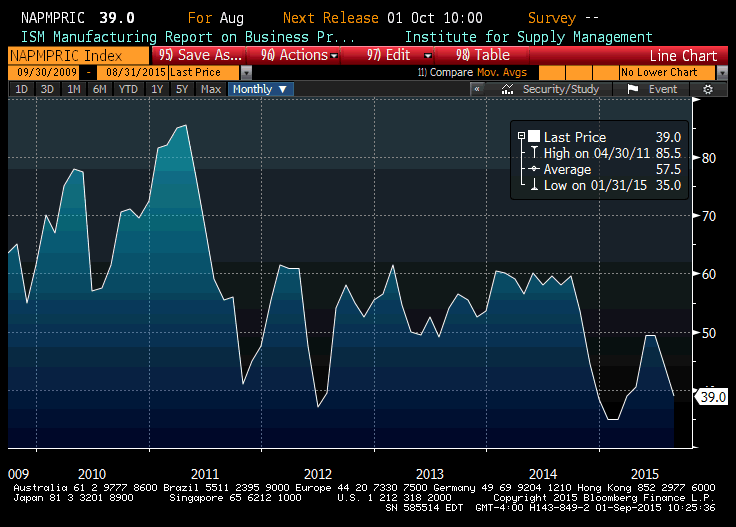At this moment, we are following developments in the Chinese economy and their actual and potential effects on other economies even more closely than usual.
-Stanley Fischer, from his Jackson Hole speech.
The World Series! A few times I have been around non-Americans who sort of chuckle at that phrase, because it has nothing to do with the world, it’s purely American. In a sense, the US Federal Reserve embodies that egocentric mindset. Fed officials have said repeatedly that they want to be careful with their communications, so as not to roil World Markets, as if the Fed and only the Fed pulls the levers on the global economy.
Well, the global markets are currently being roiled, but it’s not by the Fed, it’s due to China’s devaluation and subsequent actions, causing the Shanghai Composite to make new lows at the end of August. And it’s not really the fact that Chinese stocks have sold off, as they have a fairly low market cap, it’s that the equity market reflects a much bigger problem in the world’s second largest economy. As of Tuesday, issues were also evident in the Hang Seng index, which is down 25% from its high in April, and even in India, where the Sensex closed at its lowest level in a year. Certainly, the fact that emerging market currencies have been under severe pressure might have something to do with the Fed’s previous actions, like the end of QE, which only manifest their effects with a lag. But right now, it’s not the Fed. It’s China and other Asian economies.
Eyes are now on the September 17 FOMC, with some observers still thinking a strong payroll number Friday could sway the vote. I don’t believe it can, given current volatility. The Fed has two mandates, employment and inflation. Employment data has been strong enough to support the argument for a hike for some time. Price inflation has not. Core year over year PCE prices were only up 1.2% in last Friday’s data. And take a look at the Prices Paid component in yesterday’s ISM data [chart below]. In the dirt. The combination of price data and volatile asset markets will stay the Fed’s hand this month. However, October will be in play. On one point, we can absolutely trust the Fed’s word, and that is on the likely gradual trajectory of Fed hikes. I would be surprised to see the Fed Fund target any higher than 1% by the end of next year.





